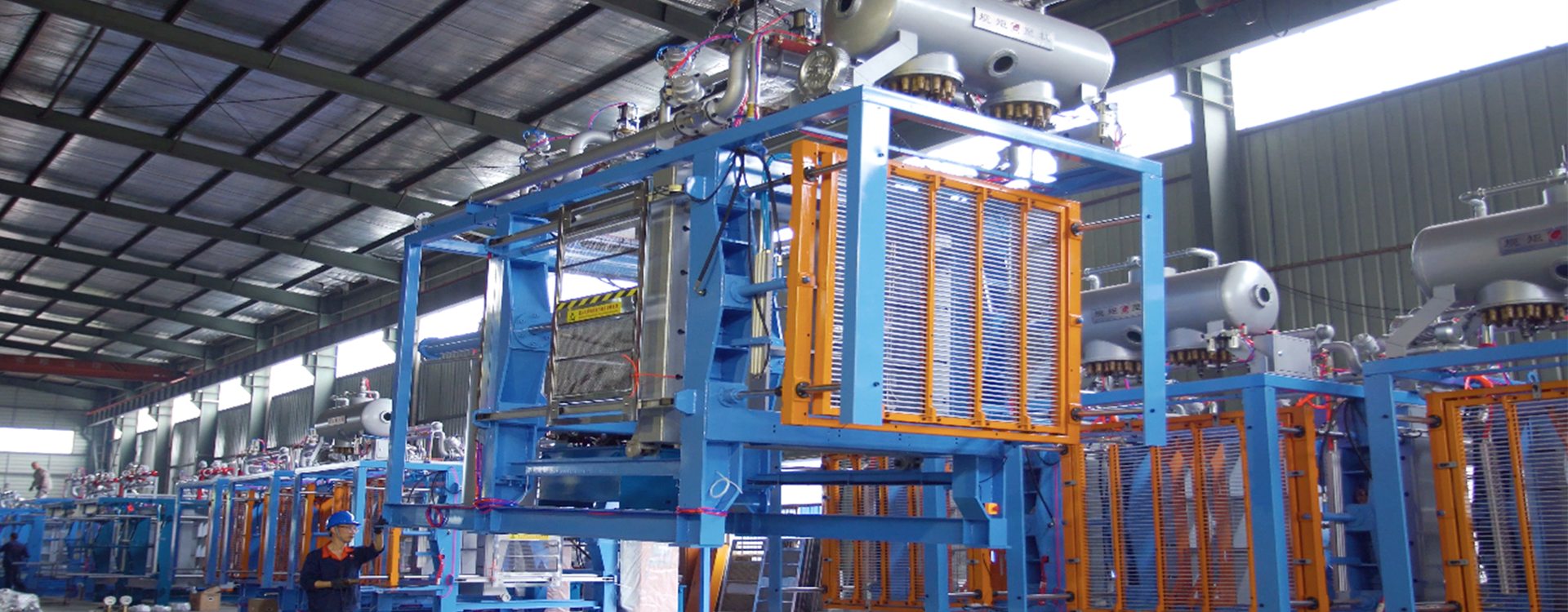Working Theory of EPS Machine
EPS machine (Expandable Polystyrene Machine) is a type of equipment used to produce EPS foam products. It converts raw materials into final foam products through a series of complex process steps. EPS foam products are widely used in packaging, construction, art and other fields. The production process involves precise engineering and physical principles.
The working principle of the EPS machine mainly includes the following steps:
1. Raw material pretreatment: The main raw material of EPS foam is polystyrene particles, and these particles need to be pretreated during the production process. The purpose of pretreatment is to heat the raw materials to a certain temperature to expand and soften them for subsequent molding.
2. Pellets feeding and melting: The pretreated EPS pellets are transported to the melting chamber of the EPS machine. Here, the particles are heated to high temperatures, above their glass transition temperature, turning them into a viscous liquid state. This step requires precise temperature control to ensure that the particles are completely melted but do not exceed their decomposition temperature.
3. Inflatable expansion: Once the pellets melt, the machine injects a certain amount of blowing agent, usually a gas, such as air or hydrocarbon, into the melted polystyrene. The addition of a blowing agent causes the polystyrene to expand, forming a tiny bubble structure. These air bubbles make EPS materials lightweight, insulating and energy-absorbing.
4. Molding and cooling: The expanded polystyrene liquid is delivered to the mold, which is determined according to the shape and size of the final product. Once filled into the mold, EPS cools and solidifies rapidly in the mold, which helps ensure the structural stability and shape accuracy of the product.
5. Product handling and packaging: After cooling, the EPS products are taken out of the mold and sent to subsequent processing processes. This may include steps such as cutting, trimming and surface preparation to ensure the final product meets quality standards. Finally, the product is packaged and ready to be shipped to the customer or distributor.
Generally speaking, EPS machines use high temperatures and pressure to convert raw polystyrene pellets into foam products with specific shapes and properties. Its working principle involves key steps such as heating, expansion, shaping and cooling of materials. The precise control and coordination of these steps is the key to ensuring the quality of the final product. The working principle of EPS machines provides reliable technical support for the large-scale production of EPS foam products and promotes the continued development and innovation of the industry.
-
Thanks for Vietnamese clients choosing LONGWELL EPS machines

2024-04-15
-
Ship EPS Auto Shape Molding Machines and molds to Tanzania and Turkey

2024-04-11
-
Ship EPS recycle system to Australia

2024-04-05
-
Ship EPS auto batch pre-expander, block molding machine, steam accumulator and parts to Philippines

2024-04-05




















